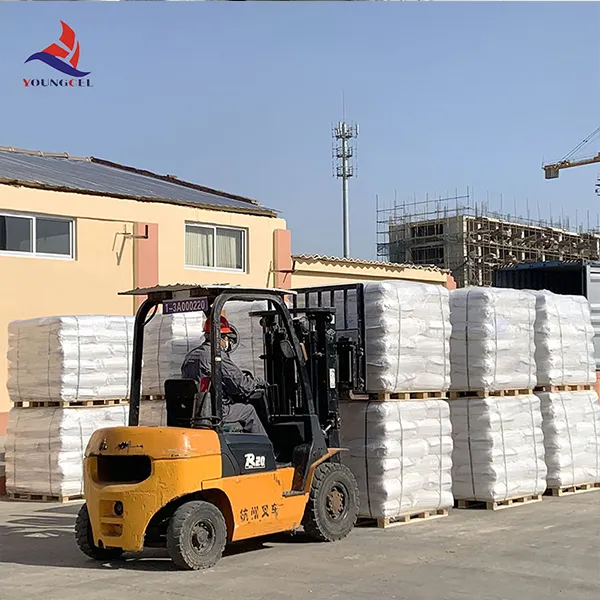The Use of HPMC in Mortar Applications
Hydroxypropyl Methylcellulose (HPMC) is a versatile and widely used cellulose derivative in various industries, particularly in construction materials such as mortars. Its unique properties make it an essential additive in both traditional and modern mortar formulations, offering significant advantages that enhance the performance and functionality of these materials.
What is HPMC?
HPMC is a non-ionic, water-soluble polymer derived from natural cellulose. It is produced through the etherification of cellulose, resulting in a product that exhibits excellent film-forming, thickening, and stabilizing properties. HPMC has become a staple in the formulation of construction materials due to its ability to improve workability, adhesion, and water retention.
Enhancing Workability
One of the most notable benefits of incorporating HPMC into mortar is the improvement of workability. Mortars that contain HPMC are easier to mix, apply, and manipulate. The polymer improves the flow of the mortar, allowing for smoother application, especially on vertical surfaces. This property is particularly advantageous when working with tile adhesives and thin-bed mortars since it helps maintain consistency during the installation process. Furthermore, improved workability translates to reduced labor time and increased efficiency on construction sites.
Improved Water Retention
mortar hpmc

Water retention is a critical factor in the curing process of mortar. HPMC ensures that enough moisture is retained within the mix, promoting proper hydration of the cement particles. This quality is essential for achieving optimal strength and durability in the finished product. Adequate water retention prevents the premature drying of the mortar, which can lead to cracks and compromised structural integrity. Consequently, HPMC-modified mortar can achieve better bonding strength and longevity, essential for both indoor and outdoor applications.
Enhanced Adhesion and Bonding
HPMC plays a significant role in enhancing the adhesion and bonding properties of mortar. The polymer’s chemistry allows it to interact effectively with both the cement matrix and the aggregates, creating a more robust connection. This is particularly important in applications such as tile installations, where a strong bond between the tile and the substrate is essential for durability and performance. HPMC ensures that the mortar adheres well to various surfaces, including concrete, brick, and ceramics, thereby expanding its applicability in diverse construction scenarios.
Resistance to Environmental Factors
In addition to improving the workability and adhesion of mortars, HPMC can also enhance their resistance to various environmental factors. Mortars containing HPMC demonstrate better resistance to freeze-thaw cycles and can withstand harsher weather conditions. This resilience is crucial for outdoor applications, where exposure to moisture, temperature fluctuations, and UV radiation can weaken conventional mortars. By utilizing HPMC, manufacturers can develop mortars that maintain their mechanical properties and appearance over time, reducing the need for repair and maintenance.
Conclusion
Incorporating Hydroxypropyl Methylcellulose into mortar formulations has revolutionized the construction industry by providing practical solutions for modern building challenges. From improved workability and water retention to enhanced adhesion properties and environmental resistance, HPMC offers a multitude of benefits that significantly enhance the performance of mortars. As the construction industry continues to evolve, the demand for high-quality, reliable materials will only increase, making HPMC a critical component in the development of advanced mortar products. Its versatility and efficacy promise to play a vital role in future construction practices, ensuring that buildings are not only structurally sound but also sustainable and durable. As we look ahead, it is evident that HPMC will remain an indispensable additive in the quest for innovative and high-performance building materials.
-
Rdp Powder: Key Considerations for Wholesalers in the Building Materials IndustryNewsJul.08,2025
-
Key Considerations for Wholesalers: Navigating the World of Hpmc - Based ProductsNewsJul.08,2025
-
Hpmc Detergent: Key Considerations for WholesalersNewsJul.08,2025
-
Key Considerations for Wholesalers: China Hpmc For Tile Adhesive, Coating Additives, Concrete Additives, and MoreNewsJul.08,2025
-
Crucial Considerations for Wholesalers: Navigating the World of Construction MaterialsNewsJul.08,2025
-
Key Considerations for Wholesalers Sourcing Additive For Cement, Additive For Concrete, Additive For Putty from Additive Manufacturer Shijiazhuang Gaocheng District Yongfeng Cellulose Co., Ltd.NewsJul.08,2025




